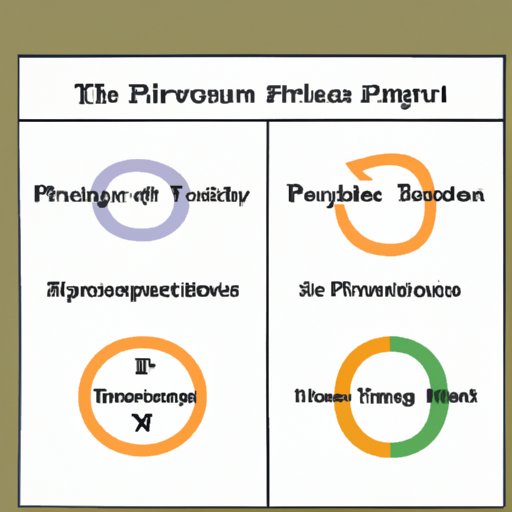Introduction
Identifying one’s true self is a lifelong journey that many of us embark on. However, with the complexities of human nature and individual differences, it can be challenging to pinpoint who we truly are. The importance of knowing oneself lies in creating a fulfilling life that aligns with our values and strengths. This article aims to provide insights into discovering your true self by exploring personality types and traits, taking personality tests, and finding similarity with role models and doppelgangers.
Discover Your True Self: Exploring the Similarities Between Personality Types
Human personalities are complex and multifaceted, and there is no one-size-fits-all approach to understanding them. However, certain personality traits are more common than others, and research has shown that understanding personality types can lead to a better understanding of oneself.
There are various personality types, including the Myers-Briggs Personality Type Indicator, the Big Five Personality Traits, and the Enneagram. These personality types are characterized by traits such as introversion or extroversion, openness to experience, conscientiousness, agreeableness, and neuroticism.
Identifying similarities in personality types can help in self-discovery because it aids in understanding our strengths, weaknesses, and behavioral patterns. For example, if we know that we are introverted, we can factor that into our career choices or social interactions.
Know Thyself: Taking a Personality Test to Uncover Your Similarity Match
A personality test is a psychological assessment that aims to measure different aspects of an individual’s personality. Taking a personality test can provide insights into our personality traits, behavior, and tendencies.
There are various personality tests available online or with a professional, such as the Myers-Briggs Type Indicator, the Enneagram, and the Big Five Personality Test. These tests can help you identify your personality type and traits, providing a starting point for self-discovery.
Which Am I Most Like?: Understanding Personality Types and Traits
Understanding the different personality types is crucial in self-discovery because it aids us in identifying our unique strengths, weaknesses, and tendencies.
The Myers-Briggs Type Indicator categorizes personalities into 16 different types based on four dichotomies, including Extraversion (E) versus Introversion (I), Sensing (S) versus Intuition (N), Thinking (T) versus Feeling (F), and Judging (J) versus Perceiving (P).
For example, an ESFP (Extraverted, Sensing, Feeling, Perceiving) is a type of personality characterized by their warmth, humor, and outgoing nature. Alternatively, an ISTJ (Introverted, Sensing, Thinking, Judging) is a personality type characterized by their practicality, meticulousness, and reliability.
Recognizing our unique personality traits can help us make more informed decisions concerning career choices, social interactions, and personal growth.
Personality Matches: Finding Your Similarity with Your Role Models
Role models are individuals we aspire to be like, and they often possess personality traits and characteristics that we admire. By identifying the personality traits of our role models, we can gain insight into our ideal selves.
For example, someone who admires the confidence and charisma of Oprah Winfrey might take note of her extroverted nature and incorporate these traits into their own personality. Similarly, someone who admires the analytical skills of Bill Gates might aim to incorporate some of the same rational and logical thinking into their own personality.
Discovering Your Doppelganger: Comparing Personality Types and Characteristics
A doppelganger is an individual who looks remarkably similar to oneself. However, the term also applies to finding someone with a similar personality type and characteristics.
By comparing our personality types and characteristics with someone who shares similar traits, we can gain insight into our own strengths and weaknesses. We might recognize traits we want to work on, areas where we excel in, or new avenues for personal growth.
Understanding Ourselves: Using Personality Tests to Find Your Similarity Score
To measure the similarities between personality types, a similarity score can be calculated. A similarity score measures the compatibility between two individuals’ personality types.
For example, if two individuals have a similarity score of 80%, it means that 80% of their personality traits are similar. A high similarity score indicates a higher compatibility in personalities, while a low score indicates fundamental differences in personality types.
By taking a personality test and analyzing our similarity scores with other individuals, we can gain deeper insights into our personality. Knowing our compatibility with others can help with personal and professional relationships, creating a more cohesive and fulfilled life.
Conclusion
Discovering our true selves is an essential part of personal growth and living a fulfilling life. By understanding personality types and characteristics, taking personality tests, identifying role models, and comparing our personalities with others, we can gain valuable insights into our strengths and weaknesses. We encourage you to take personality tests and find your similarity match to start your journey towards self-discovery.
